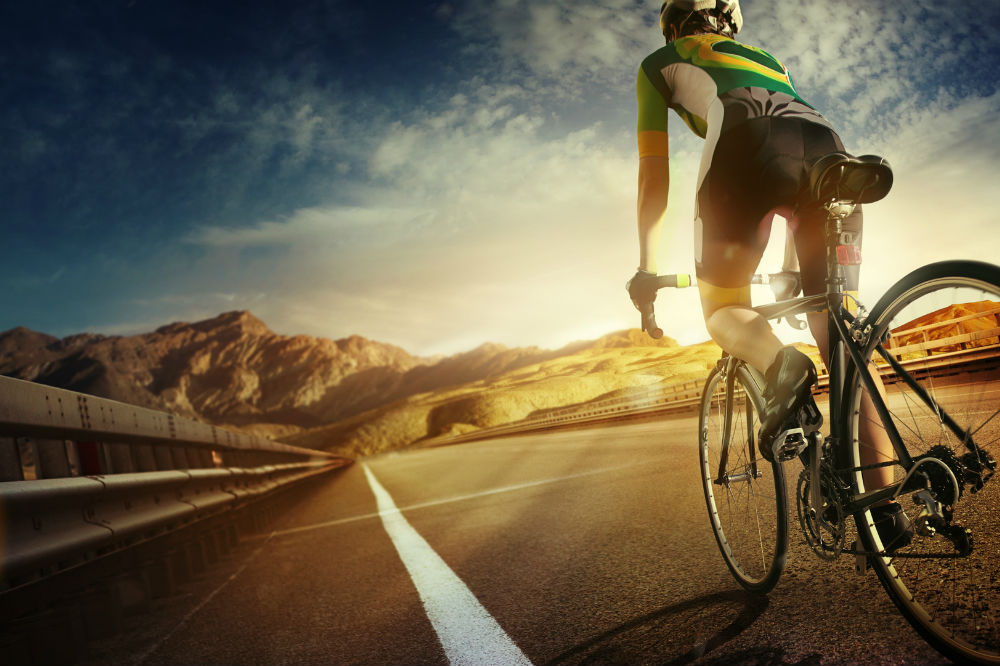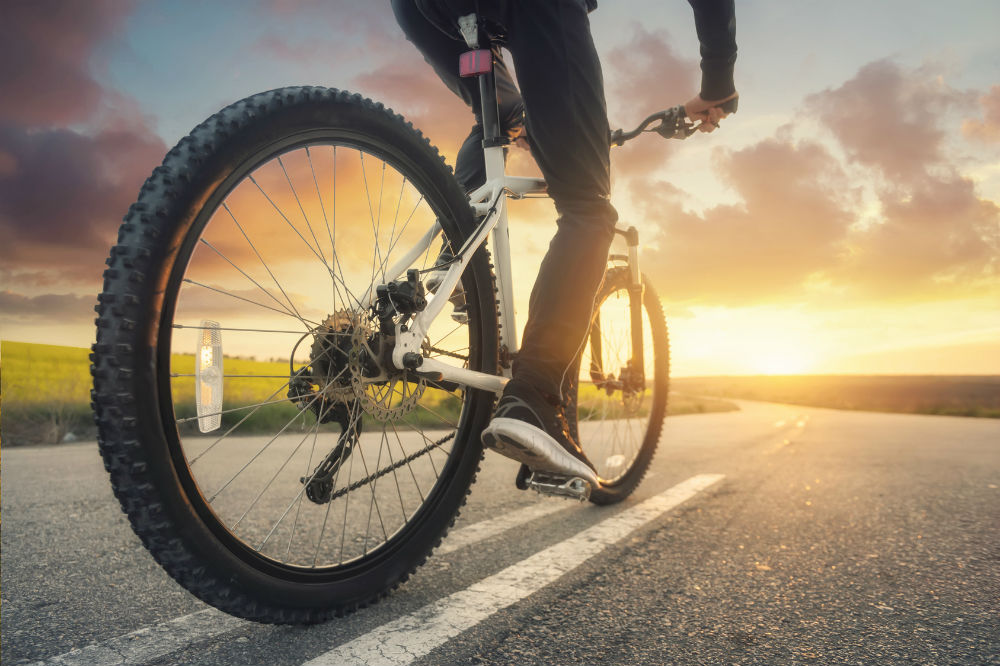- You are here:
- Home »
- Road Bikes Advice
Category Archives for Road Bikes Advice

10 Reasons Why You Should Consider Motorized Bicycles
The Best Benefits of Buying an E-Bike
Increasing your life longevity means living an active lifestyle. This entails not only making in-the-moment healthy decisions but also to structure the routine of your life in a fashion that is conducive to and incorporates steady physical activity. One of the best ways to incorporate constant, habitual physical wellness into your daily routine is to consider supplementing or completely switching your daily transit method to cycling. Biking is a zero-carbon footprint transportation method, which benefits the rider's pocketbook, as well as their body. However, many of those who would willingly transform their transportation method to biking have physical, occupational, or personal limitations to the amount of energy that they can exert. Fear not, for there is more than one way to build a bike and we have compiled the 10 best reasons why you should consider motorized bicycles.
Electrically Motorized Bicycles
Bicycles like mountain bikes and road bikes are wonderfully simple, mechanical vehicles. The only energy input comes from the cyclists' effort and thus they are inexpensive, reliable, and versatile as compared to all other forms of transportation. Electrically motorized bikes (also known as electric bikes, e-bikes, motor-assisted bicycles, and power-assisted bicycles) are built to be street legal as a bicycle and do not require a vehicle registration in the way that electric scooters and motorcycles do. Motorized bikes are, just that—a bicycle with a motor to help in accelerating the bike. E-bikes, which are legal bicycles, will feature motors designed to tap out around 20 miles per hour.
E-Bikes use rechargeable batteries, which come in many varieties. Lightweight motorized bikes will reach speeds around 16 to 20 miles per hour. Some higher-powered bikes, which still fall into the category of motorized electric bicycle, can reach speeds upwards of 30 miles per hour. Motorized bikes are designed to use a wide range of different motors. Some motorized bikes are under the classification of pedal assist. These bikes will create up to 25% motorized thrust assistance, whereas other models, which fall into the classification of power-on-demand motorized bikes, will create up to 200% acceleration from the rider's pedaling. What separates motorized bikes from mopeds and motorcycles is the ability of the bike to be propelled by the rider's pedaling power. Motorized bikes are classified into the following two types:
Pedal-Assist Motorized Bikes
A pedal-assist motorized bike is regulated directly by the rider's leg power. The motor is designed to provide a supplementary power source, in addition to the rider’s pedaling effort. For example, you will still need to pedal on the uphill ride; however, the job will be much, much easier. Pedal-assist e-bikes are street legal and are not classified differently than a bicycle.
Power-on-Demand
The motor is designed to match or exceed the rider's leg power. With a power-on-demand motorized bike, the motor is engaged by a handlebar throttle, which resembles that of a moped. On uphill climbs, the rider can use the motor power as a pedaling supplementation or they can stop pedaling altogether. However, at the end of the day, the bike can operate under its own pedal power and is not 100% reliant on the motor for propulsion.
Best 10 Reasons to Consider Motorized E-Bicycles
1. Speed Demon
With a motorized bicycle, you don't have to worry about getting worn out and slowing down. The motorized bike is designed to kick in when the going gets tough, so you aren't late to get where you're going. Motorized bikes can accelerate to over 20 miles per hour, which is the speed of a biker at a pretty quick pace. It does make it a little bit unfair for the other bikers when you are cruising past them at 20 mph and you haven't even broken into a sweat.
2. Elevation Changes (Hills)
The motorized bicycle specializes on hills. On motor assist e-bike models, riders can ascend hills easily, with only a steady pedaling force, which is supplemented by 25%. On power-on-demand models, a rider can more or less sit back and let the motor do the hard work on uphill climbs.
3. Professional Appearance
For those who live in areas with large elevation changes, biking can be a challenge. This is especially true if you are considering making a bike your main form of transportation, but you work in a professional industry. It is one thing to get all sweaty on a bike before you shower but it's another thing to show up to the boardroom looking like you just stepped out of a 5k in the desert. Motorized bikes excel on hills and keep the rider from working up a sweat on uphill slopes and super hot days. The motor allows a rider to cruise along at their leisure, with variable low energy expended in pedaling.
4. Frugality
Motorized bicycles are the cheapest form of transportation. The benefit gained from the bikes motor only adds to its value, fulfilling the main basic function of an automobile and still outweighs the long-term expense of using a car tenfold. E-bikes can be found in a range from around $300 to around $3000 and their upkeep costs are negligible when compared to cars. Best of all, no fuel is required. On a motorized bike, the rider powers the motor while pedaling.
5. Safety
In a car crash, vehicles are traveling at very high speeds when compared to bicycles. Car crashes can result in long-term injury and even death and the frequency of these occurrences are seen all too often. The worst case scenario cases are generally the same for bikers; however, the chance of this scenario taking place is negligible. Bikes are usually not traveling over 25 miles per hour at full speed. A rider wearing a helmet has exponentially lower odds of experiencing a life-threatening crash on a bicycle compared to a car crash. Less mass and less momentum results in less risk.
6. Ecological
Climate change is in full swing, everyone knows it (well, mostly) and there's nothing we can do about it! Wait. Yes, there is. Converting your main method of transportation into a motorized bike is one of the biggest things that anyone can do single-handedly to reduce their own personal carbon footprint. Imagine if everyone in the country decided to bike to work. Peace on earth would happen.
7. Health and Wellness
The hardest thing about working out is establishing a new habit, in terms of using a gym or creating some space in your life where you perform a useless task for the purpose of your health. People don't have time to add a thing into their lives. That is why bike commuting is the perfect way to get your physical exercise every day. Instead of adding a new habit, change an existing habit. The habit of driving to work is bad. It gets you there at 40 mph and that is it. The habit of biking to work is good. It gets you there at 20 mph and you never have to think about making specific time to exercise. Bike commuting will become the healthiest and most efficient thing you do in your day.
8. Mobility
It’s hard to drive your car up a flight of stairs, between two lanes of traffic or take it on an elevator. Bikes are inherently mobile and allow the user virtually as much freedom as if they were on foot, except bikers get where they are going up to 6 times as quickly.
9. Versatility
Many people have packages and things to carry in their vehicles, which makes it difficult to convert to bike commuting. However, it's all about the gear. Getting an extension built on your car is difficult and expensive. Bikes are made to accommodate extensions and additional storage space and the cost is once again negligible when compared to any work on a car.
10. The Fun Factor
You don't know what you’re missing until you try it. Biking is invigorating, meditative, peaceful, exciting—it's just fun. It introduces you to a new face of the landscape, which you talk to through your tires. Instead of separating you from the environment, like cars, bikes bring you into the environment. Bikers surf on the waved hills of the earth, feeling the ever changing terrain, landscape, and elements of their environment. Take off the top, turn off the engine and throttle up for the ride of your life. Just remember, always wear a helmet.

Triathlon Bikes vs. Road Bikes
If you are new to the triathlon sports, your first question might be, “What type of bicycle do I need?”
There are many types of bicycles that serve different purposes. There are mountain bikes designed for riding off road trails, cruiser bikes for casual riding, hybrid bikes which have the capabilities of both road bikes and mountain bikes, city bikes which are ideal for commuting or riding in a city, tandem bikes which are built for two, and more.
But in the world of triathlons, the question is “which type of bike is suitable?”
To answer this question, let us take a look at the properties of each bike and their advantages. Let us take a look at their differences, too.
Triathlon Bikes
Triathlon bikes are road racing bicycles designed to optimize aerodynamics to lessen air resistance. They have an aggressive geometry which means that the seat tube angle is steeper.
Typically, the seat tube angle is 76-78 degrees. This geometry puts the biker’s hips over the cranksetto engage their quadriceps more to increase power.
This puts the biker in a more forward position with their upper body weight supported by the skeletal rather than muscular system to lessen fatigue. It might look like a forceful position but it is comfortable and more aerodynamic with more efficiency and less exhaustion.
Triathlon Bikes Advantages
- It is the fastest type of bike
- It puts the rider in a more aerodynamic position, making them much faster and more efficient
- It is easier to run after transitioning from triathlon bikes
Road Bikes
Road bikes are ideal for climbing, cornering, sprinting, or biking with a group. They have a more traditional geometry and the biker is bent forward less than on triathlon bikes.
They have drop handlebars and integrated brake/ shift levers. With road bikes, the cyclist has more confidence with his/her hands on the brakes while allowing for more multiple positions on the handlebars.
Road bikes are known to be lightweight and offer comfort and versatility from commuting and recreational biking to road racing.
Advantages of Road Bikes
- They are lightweight
- They are easy and comfortable to ride
- Suitable for many types of riding
- Shifts smoothly even on a busy street and narrow alleys
Comparison of Triathlon Bikes and Road Bikes
The major difference between triathlon bikes and road bikes is the geometry of the bicycle frame, specifically the seat tube angle. This is the angle of the long tube that extends towards the seat from the bottom bracket.
The triathlon bike has a seat tube angle of 76-78 degrees while the road bike has 72 degrees. The steeper angle places the biker in a further forward position.
The biker in a triathlon bike is almost directly over the bottom bracket which is much easier to be powerful and comfortable when aiming for more aerodynamics and a much faster speed.
On the other hand, the biker on a road bike has a more laid back position which is ideal for a more efficient transfer of energy when going up a hill, pedaling at a higher cadence, cornering, and riding along a variety of terrain.
Which Is Better?
The question “Which is better: a triathlon bike or a road bike?” can only be answered by you. Are you training for racing triathlons? Do you want a bike that can be used for group biking? Will you be doing a variety of biking activities such as commuting, sprinting, or transferring loads? Will you be competitive at racing?
These guide questions will help you answer which type of bicycle is better for your needs and purpose. There’s no better type of bike, only bikes more suitable for different purposes.

Road Bikes Under 300
Road bikes are known to have a sturdy and lightweight frame that is equipped to be faster and durable on pavements, challenging terrains and long hours of cycling. Therefore it is important to have a road bike that is made of high quality materials.
However, most road bikes have high costs compared to other types of bikes. Expensive road bikes are made of high quality materials that improve biking performance and experience.
But do they really need to be expensive to have these indispensable qualities? If you love cycling but you have a limited budget, there are road bikes available for under $300. However, sometimes cheap road bikes have lower qualities.
Say no to cheap road bikes with inferior qualities. Here are some road bikes under $300 that top the market.
Vittesse Sprint
Vittesse Sprint gives you everything you need for road biking. It is built with an aluminum frame, 18 speed gears, and a triple chainset. It is ideal for beginners who also aim to win a race. It can also keep you going along hills and other challenging terrain, thanks to its triple chainset that give you low gears.
Wiggle Road Bike
This Wiggle Road Bike comes in five sizes that will fit well for people of all heights, unless you are very short or very tall. It is an entry level road bike that works decently.
It is made of an aluminum alloy frame, 14 speed Shimano gearing, and brake/ gear levers for easy shifting. For a reasonable amount you will be able to be on your own way to road biking.
B’TwinTriban 500
If your budget goes up to $300, you can get a good quality road bike with B’TwinTriban 500. It is built with an aluminum alloy frame with lightweight components.
You will have a smooth drive and shifting capabilities with its really wide range of gears, triple chainset, and eight rear sprockets. Its frame comes in eight sizes with two additional sizes for 2016 – the XXXS and XXS for petite body frames.
Carrera Zelos
Carrera Zelos is another decently priced road bike. It has an aluminum frame that’s lightweight and durable. Plus it comes with 14 speed Shimano groupset and Tektro dual pivot brakes.
Avenir Aspire
Avenir Aspire is available for purchase through Amazon. Get it at your own convenience but watch out as new models are easily sold out. It is a cost effective road bike especially for beginners.
It has everything you need for a basic road bike. It also comes in different sizes so you can get to pick the right size suited for your body frame and height.
However, if this is your first time, you might need assistance in assembly. It requires setting it up and assembling its parts before you can use it. For its price, though, assembling the bike on your own is worth it.
Features to Look For
Whether you have the money for buying expensive, more advanced road bikes or a limited budget for good quality road bikes, it is important to check the features that a good road bike should have.
-
Strength
A good road bike should be able to endure long hours of cycling and go further on challenging terrain. Check the materials on which the parts are made of.
-
Comfort
One important component is comfort. Ensure that it allows you to ride in a comfortable position with a little bending forward for better aerodynamics.
-
Geometry
When choosing a good road bike, check for the geometry. It should have a shorter wheelbase and sport a long reach to the handlebars for more aerodynamics.
Now that you know some road bike models under $300, you can be aware that there are indeed road bikes under $300 that are of good quality. They have all the basic components you’ll need and are made of a typical aluminum frame for endurance and strength.

Road Bike Weight
Road bikes perform at high speeds and are great for pavement and other challenging terrain including up hills and grass.
They are typically built with a light weight body equipped to endure a full professional racing experience, biking over epic distances or transporting loads to farther places.
Some road bikes are also designed for riding around town or for leisure biking too.
Lightweight Bikes
Having a lightweight frame is the quality that road bikes are most popularly known for. The weightis important in terms of speed and performance of road bikes. A light road bike means a good bicycle without looking to other qualities. But is it good enough to just be lightweight?
Does a Lighter Bike Make You Faster?
Does a road bike with lighter weight make you faster? Not as much as you think. Let us give an instance. Perhaps you have been biking for hours. You encounter a steep hill; it may slow you down because you feel the weight of the bike.
Thus, does buying a lighter bike save you time? Not as much. And a much lighter bike is more expensive. Buying these kinds of high end bikes will just save you few seconds but it is not cost effective or efficient for a slightly faster speed.
Comparison With Different Bike Weights
Top of the line carbon and aluminium road bikes are expensive compared to entry level road bikes or hybrid bikes. And they are about three pound lighter that entry level road bikes. A study that was conducted looked at how a 15- , 16-, 17-, and 18- pound bike performed when climbing up a one mile hill.
The two heaviest bikes took the same amount of time with only a 2.5 second difference. The 15- pound bike reached the hill top at 7.5 seconds faster than the 18- pound bike. Over hours of racing, a few seconds of difference is not a big deal and are only worth it if you are into neck to neck bike racing.
Other Weight on the Bike
A few second difference between road bike weights is not the only reason why weight matters. You can’t say that you are saving 15 percent of the weight if you choose a 15 pound bike over a 20 pound one.
It is important to take into consideration the other weights on the bike. The other weight includes your own body weight, your water bottle, smart watch, and other stuff you have on your bike.
Decreasing Road Bike Weight
Buying lighter and more expensive road bikes is not always the answer to having a lighter bike. To decrease the weight of your road bike, shedding your own body weight is the most economical and more efficient.
Losing your own weight doesn’t only reduce your overall weight but it will also increase your VO2 max which will eventually give you more energy. Body strength, especially legs, is important to so you can bike at a higher speed.
The Secret of Aerodynamics
Another technique to go faster on a road bike is aerodynamics. Aerodynamics outdoes weight. You can create an aerodynamic position by using an aerodynamic helmet, aerodynamic frame, or shaving your legs.
You can also add aero bars or adjust your seating position to increase your speed. If you lessen your frontal area by 10 percent, you will also lessen the drag by 10 percent.
Little things like positioning your elbow pads and the way you hold your head are effective ways to have more aerodynamic positioning.
Bottom Line – Road Bike Weight
An expensive road bike may have more features or may be made from high quality materials. But road bikes are not all about these components. It’s the weight that is most important.
And expensive bikes don’t mean they are lighter than entry level bikes. The difference of speed between these two kinds of bikes is only a few seconds.
Plus, there are other factors that make up the total weight of the bike such as your body weight, water bottle, and other things you put on your bike.
